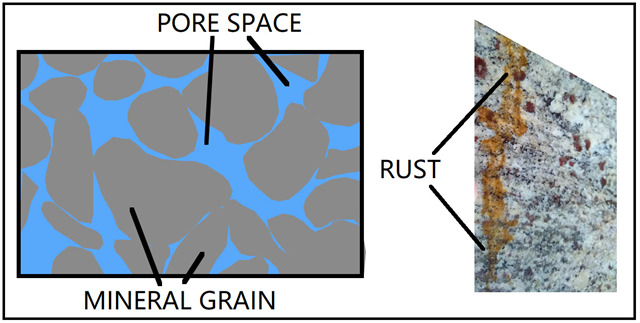Welcome to War Memorial Park! This is one of three Earthcaches I listed in the park – as such, there is no physical cache container. Instead after examining the Granodiorite Memorial at the posted coordinates, you will answer 4 questions and message me the answers. This statue is located in War Memorial Park and the park grounds are open daily from dawn to dusk. This Earthcache listing was approved by the Martinsburg-Berkeley County Parks and Recreation.
THE SPIRIT OF THE AMERICAN DOUGHBOY
This memorial is dedicated to the patriotic citizens of Berkeley County who served the United States in the World War I. It stood at a downtown Martinsburg Federal Building for almost 95 years before finding it’s new home here in War Memorial Park 2022.

The bronze doughboy statue was created by Cleveland sculptor Walter A. Sinz, and the Mount Airy Granite base was cut by The Berger Granite Co. of Chambersburg, Pennsylvania. Plaques, base, and all this memorial weighs in at whopping 1,700 pounds.
MOUNT AIRY GRANITE
The base of this memorial was sculpted from a North Carolina stone, which comes from the largest open face granite quarry in the world. Mount Airy Granite is a light gray, nearly white biotite granitoid of medium texture composed of orthoclase, plagioclase, quartz, biotite, and minor amounts of apatite, zircon, chlorite, muscovite, and epidote.

It is sold in name as granite, but it is technically a GRANODIORITE. Like most granites it is a light-colored igneous rock that is composed of quartz, feldspar, and biotite. The image below shows how igneous rocks are classified and how their composition varies by temperature.

A geologist will tell you that granite contains mostly potassium feldspars, and it has a much lower percentage of dark minerals in it like magnesium and iron. Granodiorites form at a higher temperature and contain much more plagioclase (calcium and sodium) feldspar, as well as a higher percentage of dark minerals.
DOES GRANITE RUST?
All igneous rocks are porous, and granite is no exception. Looking at the Doughboy granite base you will find some orange splotches. Rust stains can be caused by rusting metal absorbing into the surface of the stone, or occur from iron oxidizing within the granite.
Probably the more frequent cause of granite rust spots is due to being in contact with some metal substance. Bolts, rebar, beams, and plaques that remain in constant contact with the granite over a long period of time may rust, and this will leave orange stains as it is absorbed into the stones pores.

Sometimes the rust forms from within the stone VIA Chemical Weathering. Iron within the granite turns into rust in a process called OXIDATION. Since two of the three ingredients that make rust, water and oxygen, are found almost everywhere, all they have to do is infiltrate some pores in the granite and meet up with some iron and… POOF! you have rust. This type of rusting is identifiable when it appears in places where there is no clear contact with outside metals.

Ferric oxide does not cling to the metal once it forms, but instead tends to peel away and flake into dust. This dust often consists of fine particles, and will move through the stones pours via capillary action growing the rust stain.
LOGGING REQUIREMENTS:
To log this Earthcache: Read the geology lesson above. Answer all four questions posted below and post photo. Answers can be sent via e-mail or messenger contacts on my Geocaching profile. Group answers are fine, just please list all of the cachers in your group. Please do not post the answers to the questions in your logs.
QUESTION 1. Do granodiorites form at a higher or lower temperature than granite?
QUESTION 2. The very bottom granite base at ground level appears to have a slightly different texture. Do you believe that it is also granodiorite from Mount Airy?
QUESTION 3. About how many rust stains larger than a couple of inches can did you find on the granite base?
QUESTION 4. Do these rust stains appear to be caused by rust from the metal plaques, or do you think the rust due to iron oxidizing from within the granite? Why?
OPTIONAL PHOTO: Posting a photo in your log readily indicates that you (and anyone else logging the find) are at the location.

Awesnap has earned GSA's highest level:


REFERENCES
1. The Breaks Are Off The American Stone Trade, November 1924, Page 25, Google Books, Website,google.com
2. WWI doughboy statue in Martinsburg removed, put into storage M.Umstead, Martinsburg Herald, April 30, 2020, newspaer,heraldmailmedia.com
3. Where Does Granite Rust Come From? Lustro Italiano, Website,lustroitaliano.com
4. Geologic Unit: Mount Airy Stuckey, J.L., and Conrad, S.G., 1958, Explanatory text for geologic map of North Carolina: North Carolina Division of Mineral Resources Bulletin, no. 71, 51 p., Website,ngmdb.usgs.gov